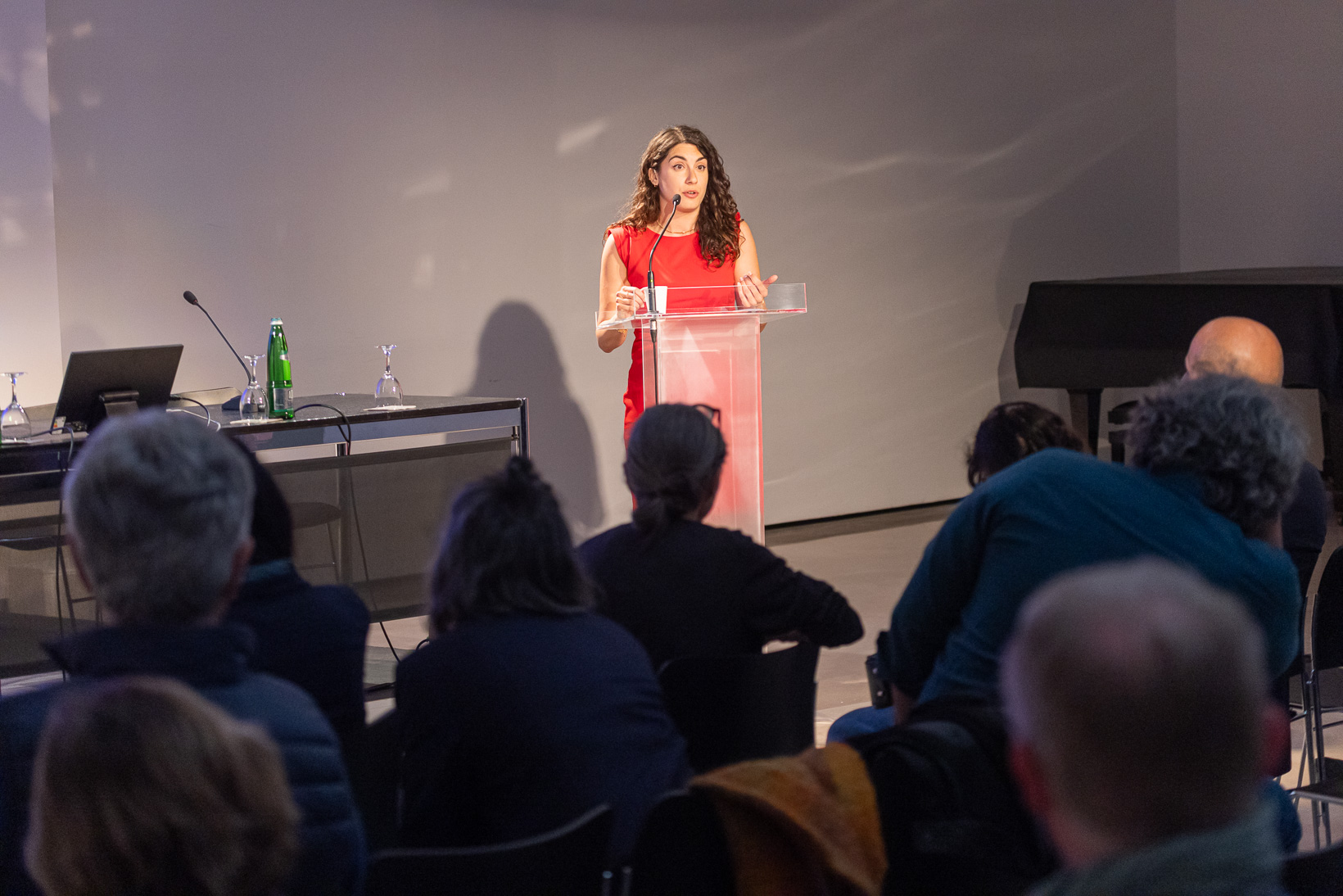Natural Disasters in an Archaeological Context
H17:00-19:30
“I Pomeriggi” series
H17:00-19:30
“I Pomeriggi” series
Free entrance, register here
To attend online register here
Istituto Svizzero
Via Liguria 20, Roma
The conference will be held in English and Italian
Curated by Selin Gür (Fellow Roma Calling, Archaeology)
Throughout earth’s long geological history, tectonic movements have formed fault lines, and the collision of plates has given rise to volcanoes, while the fracturing of these plates has triggered earthquakes. These dynamic processes have also reshaped the distribution of water sources. Simultaneously, climate change has transformed earth’s landscapes by altering weather patterns, sea levels, and glacial cycles.
This conference aims to reconstruct the memory of past natural calamities by combining modern geological data with archaeological methods. In doing so, it also hopes to better understand their long-term impacts on human mobility and societal changes.

Programme
H17:00 Ilyas Azouzi, Institutional greetings
H17:05 Selin Gür, Greetings
H17:20 Bülent Arıkan, Istanbul Technical University
Paleoclimatic Changes As Natural Disasters: Long-term Impacts, Opportunities, and Societal Changes
H17:50 Luisa Migliorati, Sapienza University of Rome
Historical insights into the humans-environment relationship: how did man react to natural hazards?
Break
H18:30 Maria Ilaria Pannaccione Apa, INGV
The HUACAS Project
H19:00 Laura Pecchioli, University of Vienna, University of Humboldt
Assessing construction techniques related to the impacts of earthquakes and environmental changes in Ostia Antica
H19:30 Closing remarks
Biographies
Bülent Arıkan is a full professor in archaeology with extensive experience in the Near East. His research centers on modeling paleoclimates and simulating behavioral changes due to past environmental shifts, while also examining how ancient cultures reshaped their landscapes. As an anthropological archaeologist, he focuses on the socio-ecological dynamics and environmental impacts of land use in early complex societies of Southwest Asia, particularly during the Early Bronze Age. He currently heads the Department of Ecology and Evolution at the Eurasia Institute of Earth Sciences in Istanbul Technical University and directs excavations at Hacımusalar Höyük in Turkey.
Selin Gür is a postdoctoral researcher and assistant at the Institute of Archaeology at the University of Bern. She earned her B.A. in Classical Archaeology from the University of Istanbul and an M.Sc. in Settlement Archaeology from METU before completing her Ph.D. at the University of Bern on domestic architecture and identity in Cilicia. During her studies, she has participated in numerous excavations in Turkey and Italy. In Rome, her research is centering on examining the effects of natural disasters on the architecture and settlements in Lipari, Sicily, spanning from the Neolithic/Bronze Age to the Roman Imperial Period.
Luisa Migliorati is an associate professor in archaeology and academic with a strong international presence. She has held leadership roles such as Vice-President of CIPSH and board memberships in both the Union Académique Internationale and the World Philology Union. A member of Academia Europaea and a corresponding member of the Pontificia Accademia Romana di Archeologia and the Istituto Nazionale di Studi Romani, Migliorati has an extensive teaching background. She has taught Ancient Topography, Cartography, and Urbanism at Rome Sapienza University and UNITELMA-Sapienza, and delivered courses at the Universidad Autónoma de Yucatán. Additionally, she directs the Italian section of Tabula Imperii Romani-Forma Orbis Romani.
Maria Ilaria Pannaccione Apa is an Andean archaeologist with 40 years of experience in Andean archaeology, ethnohistory, landscape archaeology, and the study of ancient seismicity and volcanism. Her work spans predictive analyses for archaeological site identification, evaluations of architectural vulnerability, and research into social resilience in regions affected by natural risks. As an experienced project manager, she has directed archaeological missions in Peru, Nepal, Cameroon, Italy, Spain, and worked as an collaborator in Peru, Turkey, and Italy since 1981. She is a visiting professor in Peru since 2014, currently serves as Scientific Director of the HUACAS Project under the Italian Archaeological Missions Abroad (MAECI) and holds various research roles at the National Institute of Geophysics and Volcanology (INGV) in Rome.
Laura Pecchioli is an architect and researcher specializing in monument restoration and archaeological site conservation. Her work includes projects such as the Sarcophagi Museum in San Silvestro Basilica and the restoration planning of Capitolium/Archaeological Park Ostia Antica. After earning her Ph.D. in Technology and Management in Cultural Heritage, she has lectured and conducted research in several European cities, including at Humboldt University, TU Wien and Bern University. In collaboration with the Gerda Henkel Foundation, she led a project on ancient earthquake prevention and masonry repairs in Ostia Antica. She is also an expert member of ICOMOS-ISCARSAH and ICORP, with research interests in archaeoseismology, post-disaster recovery, urban resilience, climate change, damage assessment, and risk management.
Photo by Davide Palmieri
Photo by Davide Palmieri
Photo by Davide Palmieri
Photo by Davide Palmieri
Photo by Davide Palmieri
Photo by Davide Palmieri
Photo by Davide Palmieri
Photo by Davide Palmieri
Photo by Davide Palmieri
Photo by Davide Palmieri